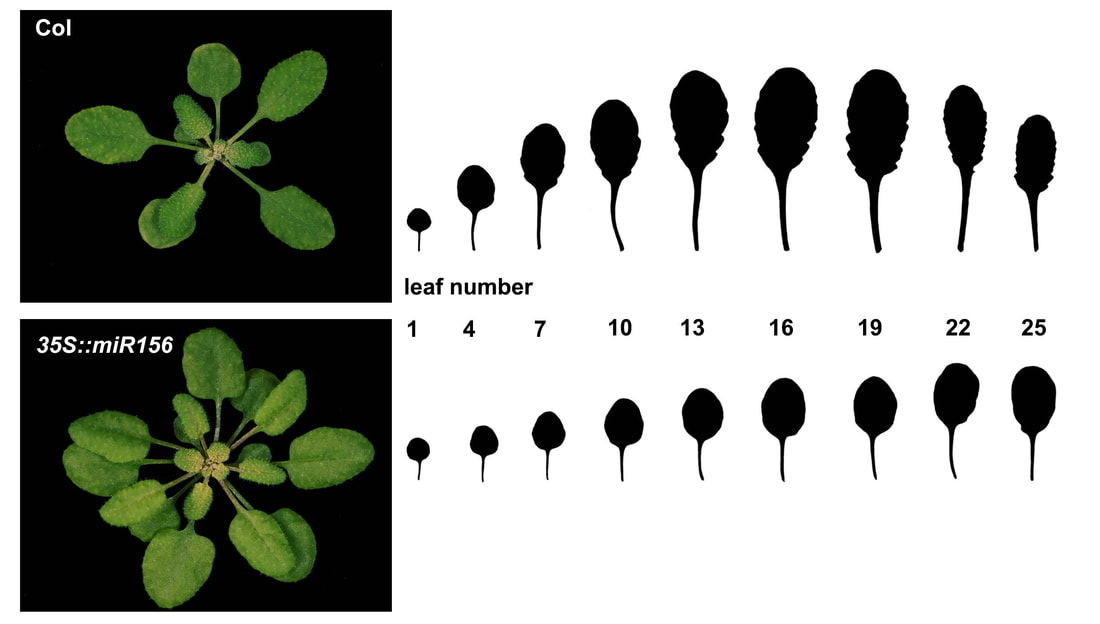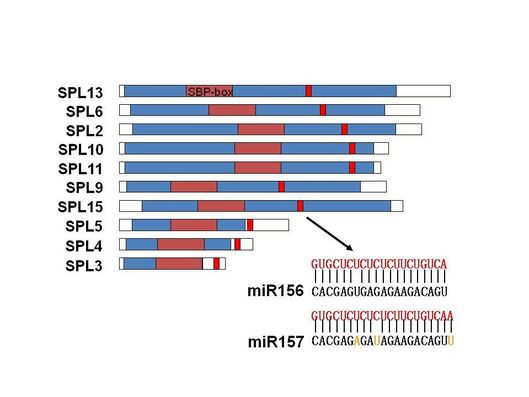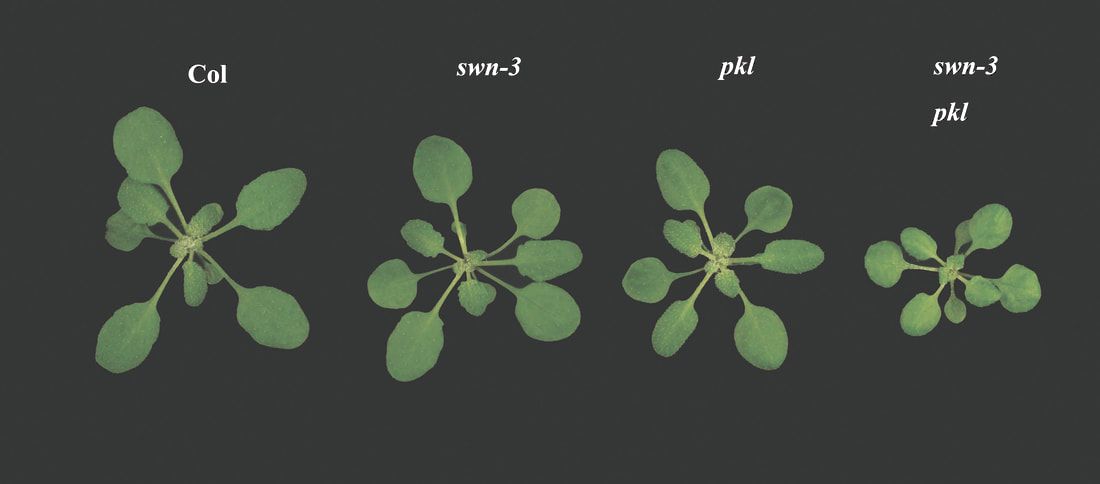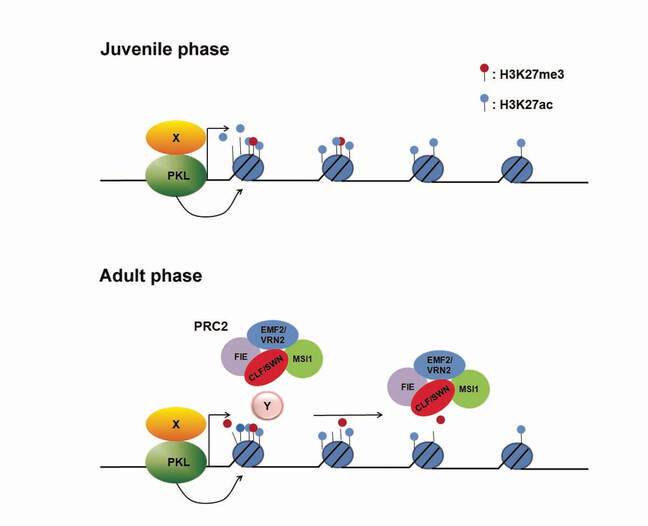
Unlike animals that complete organogenesis during embryo development, plants continuously produce new organs throughout their life. For the flowering plant Arabidopsis thaliana, the first leaves generated after germination are juvenile leaves, which are small and round and have no abaxial trichomes. Gradually, the leaves become more and more elongated and serrated and begin to produce trichomes on their abaxial side. These leaves are adult leaves. The juvenile to adult phase transition is controlled largely by the miR156-SQUAMOSA PROMOTER BINDING PROTEIN-LIKE (SPL) module, and this module is found in Arabidopsis, Maize, Switchgrass, Populus, and Acacia. The juvenile-to-adult vegetative phase change proceeds the reproductive development and it is associated with many developmental transitions and stress resistant responses.

There are 16 SPL proteins in Arabidopsis, defined by the presence of a conserved 79 amino acid DNA-binding domain . Of these 16, 10 have a nucleic acid sequence complementary to that of miR156/miR157, and their activities are reduced by miR156/miR157 via mRNA cleavage and/or translational inhibition.

Vegetative phase change is regulated by PKL and SWN, two epigenetic regulators.




